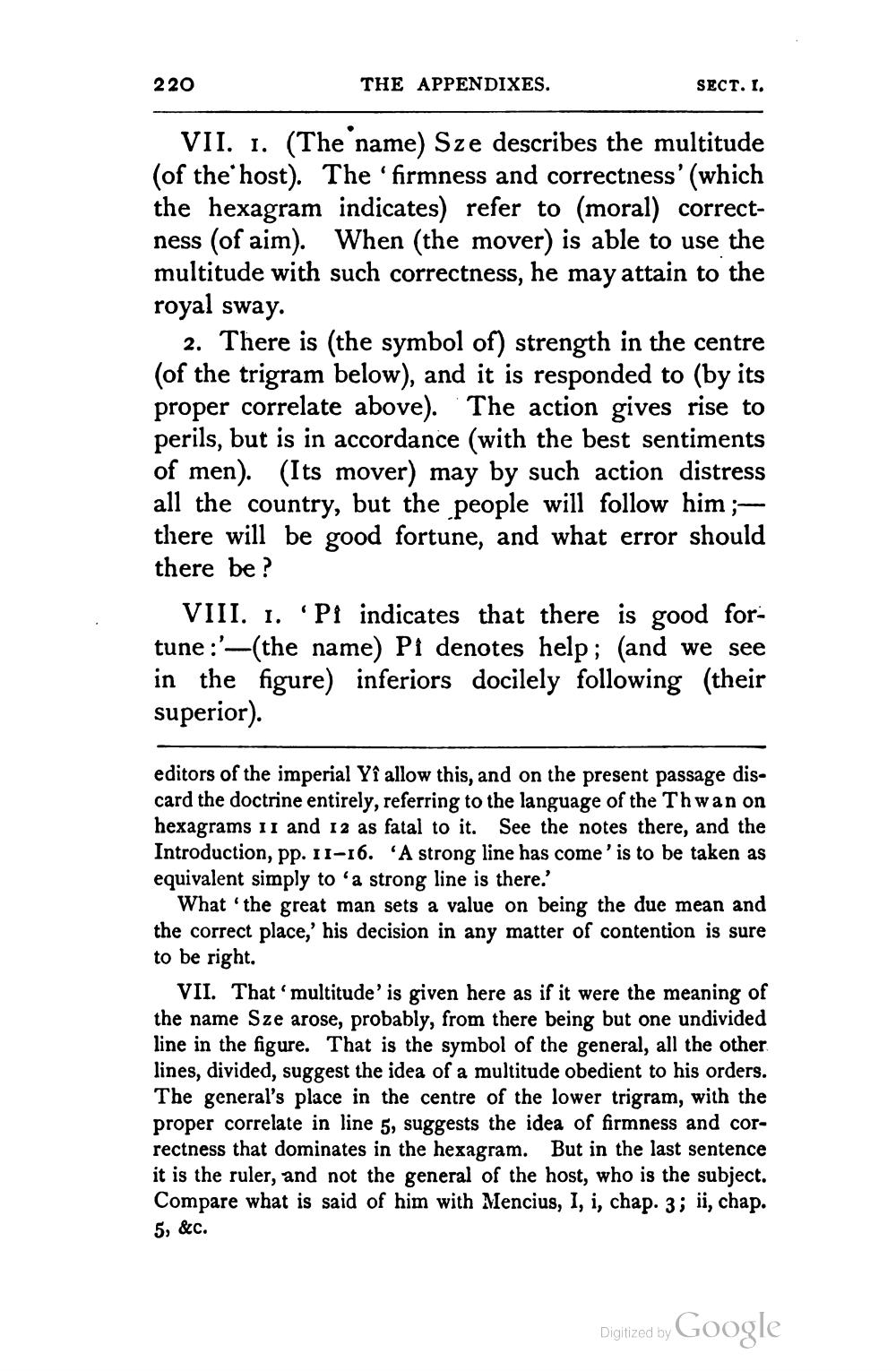________________
220
THE APPENDIXES.
sect. I.
VII. 1. (The name) Sze describes the multitude (of the host). The 'firmness and correctness' (which the hexagram indicates) refer to (moral) correctness (of aim). When (the mover) is able to use the multitude with such correctness, he may attain to the royal sway.
2. There is (the symbol of) strength in the centre (of the trigram below), and it is responded to (by its proper correlate above). The action gives rise to perils, but is in accordance (with the best sentiments of men). (Its mover) may by such action distress all the country, but the people will follow him ; there will be good fortune, and what error should there be ?
VIII. 1. *Pi indicates that there is good fortune :'-(the name) Pi denotes help; (and we see in the figure) inferiors docilely following their superior).
editors of the imperial Yî allow this, and on the present passage discard the doctrine entirely, referring to the language of the Thwan on hexagrams II and 12 as fatal to it. See the notes there, and the Introduction, pp. II-16. 'A strong line has come' is to be taken as equivalent simply to a strong line is there.'
What 'the great man sets a value on being the due mean and the correct place,' his decision in any matter of contention is sure to be right.
VII. That multitude' is given here as if it were the meaning of the name Sze arose, probably, from there being but one undivided line in the figure. That is the symbol of the general, all the other lines, divided, suggest the idea of a multitude obedient to his orders. The general's place in the centre of the lower trigram, with the proper correlate in line 5, suggests the idea of firmness and correctness that dominates in the hexagram. But in the last sentence it is the ruler, and not the general of the host, who is the subject. Compare what is said of him with Mencius, 1, i, chap. 3; ii, chap. 5, &c.
Digitized by Google




